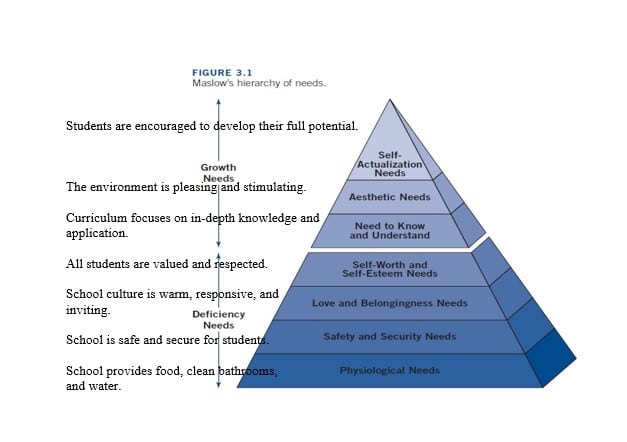Abraham Maslow’s theory of a hierarchy of needs is well known to many educators who study educational psychology.
Maslow posited a theory of motivation centered on an individual’s desire to have certain needs met.
The famous pyramid depicts how the needs build upon one another and eventually lead to self-actualization.
As a teacher educator, I introduce my students to Maslow’s theory as we discuss how students learn and factors that support and impede development.
For example, we discuss how a child who is hungry or tired or does not feel safe and secure, will have a hard time learning.
As they prepare to become teachers, I implore them to examine how their attitudes and actions can assist a child in having their needs met and ultimately experience success in school and life.
As I was preparing for a class in my Foundations of Education course, I came across a new way to apply Maslow’s hierarchy of needs.
In chapter of 1 of Linda Darling-Hammond’s book The Flat World and Education: How America’s Commitment to Equity Will Determine Our Future, she describes an under-resourced school in California from a 2002 lawsuit over school funding and notes
“If Maslow’s hierarchy of needs were applied to schools this kind of institution would be at the basic survival level, lacking the rudiments needed to begin to focus on the quality of learning and teaching or the development of higher-order thinking and performance skills. “(2010, p. 8).
I was immediately intrigued by the idea of applying Maslow’s theory to a school, especially if this new application would provide an additional way to measure school equity.
So I created a new pyramid of hierarchy needs but identified how each need applied to schools.
The needs remain the same, but instead of focusing on the individual, we now examine the school to determine if it is providing the environment and experiences that will allow children to successfully have their needs met.
In many ways, this new view of a hierarchy of needs shifts from what could be a deficit view of children (i.e., the child lacks self-esteem and cannot learn), and moves to an emphasis on how the school culture can impact a child’s ability to thrive (i.e., the school values and respects all students).
There are a plethora of resources that discuss how to apply Maslow’s theory to the classroom.
Most provide examples of how teachers can support children, such as providing snacks and water, discouraging social isolation, and teaching children friendship skills so they can experience belonging.
But what if we focused on improving the climate and the culture of the school, to create an environment where all children could have their needs met?
What if we measure schools on how well they met the needs of students as a whole, instead of focusing on individual teachers?
As we continue to push for school equity perhaps revisiting some of our most fundamental theories will provide new ways of thinking and new approaches to dealing with old problems.
I created this picture as part of my lecture on how we can apply Maslow’s hierarchy of needs to schools.


